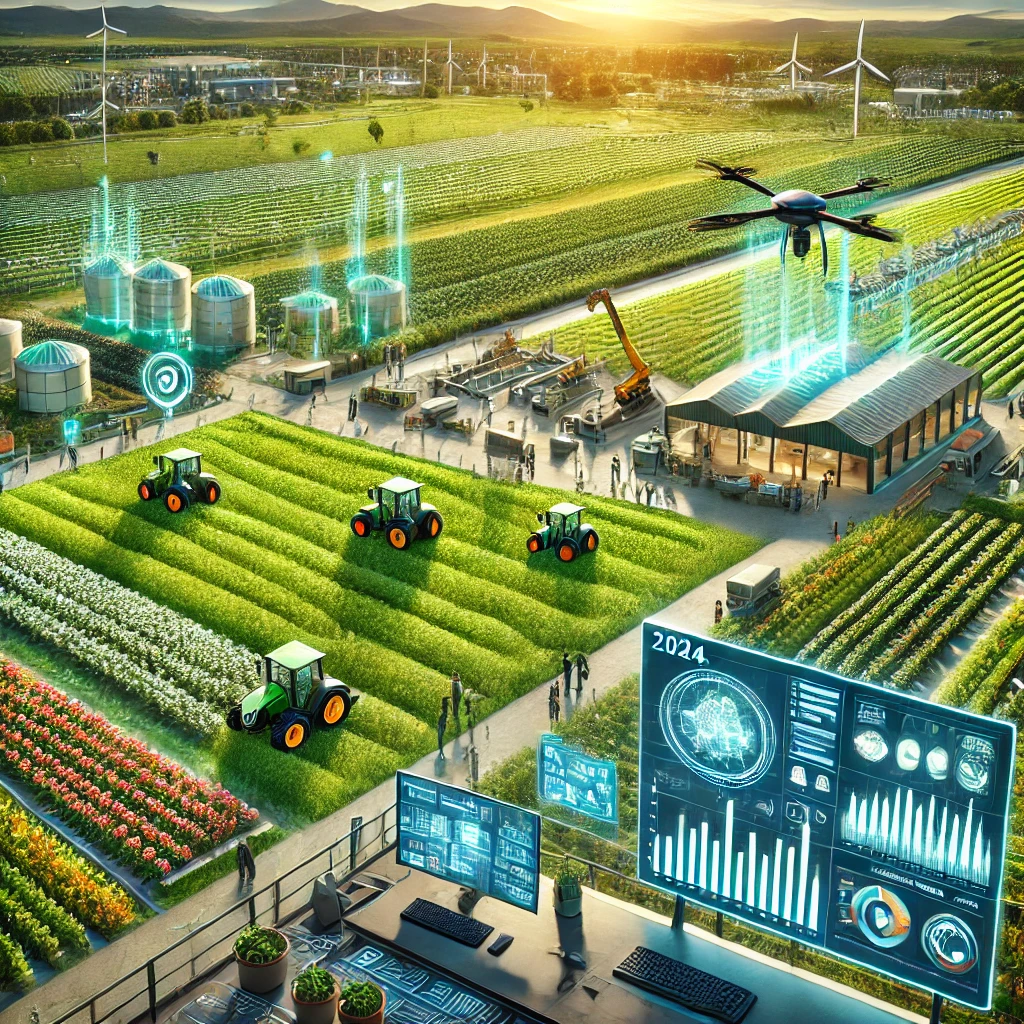The Future of Agritech and Foodtech in 2024: Key Trends and Innovations
As we move through 2024, the Agritech and Foodtech sectors are undergoing transformative changes driven by technological advancements, sustainability initiatives, and shifting consumer preferences. These industries are pivotal in addressing global challenges such as food security, climate change, and resource efficiency. This article explores the latest trends and innovations in Agritech and Foodtech that are shaping the future of agriculture and food production.
1. Digital Twins and Connected Farming
One of the most significant advancements in Agritech is the adoption of digital twins and connected farming technologies. Digital twins are virtual replicas of physical assets, such as fields or equipment, that allow farmers to monitor and manage their operations with unprecedented accuracy. In 2024, digital twins are being used across the United States and Europe for precise field management and equipment maintenance. This technology helps optimize resource use, enhance productivity, and reduce operational costs by providing real-time insights into farm operations.
Connected farming, powered by IoT devices, further enhances this approach by enabling continuous data collection and analysis. Sensors and smart devices monitor soil conditions, weather patterns, and crop health, allowing farmers to make data-driven decisions that improve yields and reduce waste. This level of automation is especially critical as the agricultural workforce ages and labor shortages become more pronounced (Trinetix).
2. Automation and Robotics in Agriculture
Automation is becoming increasingly vital in the agricultural sector as farmers seek to improve efficiency and address labor shortages. In 2024, AI-driven drones and robotics are leading the way in farm automation. These technologies are being used for tasks such as pest control, irrigation optimization, and crop health monitoring. For example, AI-powered drones can detect and address potential crop threats, such as pests or diseases, before they become widespread, significantly reducing crop loss and the need for chemical interventions.
Robotics is also playing a crucial role in harvesting, with self-steering vehicles and automated harvesting robots becoming more common on farms. These machines reduce the need for manual labor, increase harvesting efficiency, and allow for more precise operations, which is essential for high-value crops (Trinetix).
3. Sustainable Proteins and Alternative Crops
Sustainability continues to be a driving force in the foodtech industry, with a growing focus on alternative proteins and crops. In 2024, companies are making significant strides in developing plant-based and lab-grown meat alternatives. These innovations aim to reduce the environmental impact of meat production and offer consumers more sustainable food choices. For instance, companies like Gourmey and Multus are investing in large-scale facilities to commercialize alternative protein products, such as lab-grown meats and plant-based alternatives.
Additionally, the industry is exploring alternative crops to diversify food production and enhance resilience against climate change. Crops like cocoa, coffee, and palm are being reimagined through innovative agricultural practices, including crop rotation and sustainable farming methods. These practices not only improve soil health and biodiversity but also reduce dependency on single-crop economies, which can be vulnerable to market fluctuations and environmental stresses (Big Idea Ventures).
4. Food Safety and Nutritional Innovation
Food safety and nutrition are becoming increasingly important in the agri-food industry, particularly as consumers demand healthier and safer food options. In 2024, there is a strong emphasis on integrating smart sensors, data analytics, and traceability technologies to enhance food safety. These technologies are being used to detect pathogens in food, monitor food quality, and ensure compliance with safety standards throughout the supply chain.
Nutritional innovation is also gaining momentum, with companies focusing on reducing sugar content, embracing clean labels, and incorporating functional ingredients into food products. This trend is driven by growing consumer awareness of the health impacts of diet and a desire for foods that support overall well-being. Companies are responding by developing products that not only meet these demands but also contribute to sustainability by using eco-friendly packaging and reducing food waste (Big Idea Ventures).
5. Infrastructure and Investment in Agritech
As Agritech and Foodtech companies move closer to commercializing their innovations, infrastructure development and investment are becoming increasingly important. In 2024, there is a push to build the necessary facilities and production centers to support large-scale production of alternative proteins, sustainable crops, and advanced agricultural technologies. This includes investments in R&D centers, production plants, and distribution networks that can scale these innovations to meet global demand.
The role of venture capital and corporate partnerships is also critical in driving the growth of Agritech and Foodtech. Despite a challenging investment environment, there is optimism for companies that can demonstrate commercial viability and achieve positive unit economics. Long-term resilience and the ability to adapt to market changes will be key factors in attracting investment and ensuring the success of these industries (World AgriTech USA).
Conclusion
The Agritech and Foodtech sectors are poised for significant growth and innovation in 2024, driven by advancements in digital technology, sustainability, and consumer demand for healthier, safer, and more sustainable food options. As these industries continue to evolve, they will play a crucial role in addressing global challenges related to food security, environmental sustainability, and public health.
The future of agriculture and food production will be shaped by the successful integration of these technologies and practices, enabling a more resilient, efficient, and sustainable food system. Companies that embrace these trends and invest in the necessary infrastructure and partnerships will be well-positioned to lead the next wave of innovation in Agritech and Foodtech.

